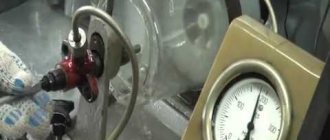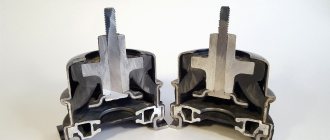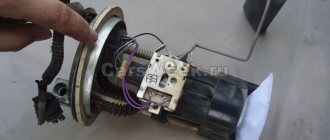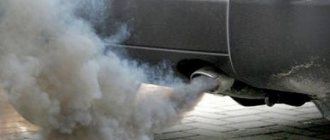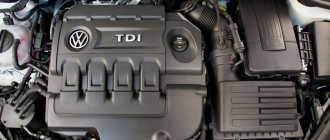Before you learn how you can test your fuel injectors, a few words about what a fuel injector is. The fuel injector replaced the carburetor, which mixed fuel with air, forming an air-fuel mixture (FA), for subsequent supply to the combustion chambers of the car engine.
By the way, carburetors still exist, mainly on classic cars, as well as special vehicles. On all modern cars it was replaced by injectors starting in 1990. With the advent of injectors, the fuel injection system began to work under the control of the engine ECU (electronic control unit).
Despite the many advantages of injection systems, for many motorists, giving up a carburetor was a real tragedy. Since before this, most motorists repaired and adjusted the injection system without outside help and expensive tools.
However, fuel injectors are more reliable and efficient than a carburetor, so progress is inevitable in this situation. However, at the same time, they can cause trouble for their owner, and in such a situation, not everything is as simple as with a carburetor, and usually a visit to a service station is required to solve the problem.
But is it possible to independently diagnose problems with injectors, and if so, what is needed for this? You will find out about this now.
Increased fuel consumption
If the injector springs are damaged, fuel will flow into the cylinders even when it is not needed, and will also flow in greater quantities than necessary. This will undoubtedly have a serious impact on the fuel consumption and smoke emissions of a diesel vehicle.
Pay attention to the signs described. By paying attention to the things described above in advance and visiting Diesel Service in a timely manner, you will save a large amount of your time and money.
Malfunctions of the injector (nozzles) occur on both diesel and gasoline engines. In the design of the power supply system of an injection engine, the nozzle is an element that is responsible for injecting a sprayed portion of fuel into the combustion chamber under a certain pressure.
Precise dosing, tightness and timely operation of the injection nozzle ensure stable and proper operation of the engine in all operating modes. If the injector “flows” (passes excess fuel at a time when its supply is not required), the efficiency of fuel atomization decreases (the shape of the torch is disrupted) and other injector malfunctions occur, then the engine begins to smoke gray or black smoke, loses power, consumes a lot of fuel and etc.
Read in this article
The main signs that the injector is leaking, including into the cylinder
If the injector does not let fuel through at the moments when it is required, the common people say that “the injector is pouring into the cylinder.” In this case, the fuel is poorly atomized or simply flows in a small stream into the combustion chamber. What are the signs of this failure? First of all, at idle or at low loads, characteristic engine jerks appear. As the engine warms up, the degree of jerking decreases due to much better evaporation of fuel in a warm engine, even in the event of injection irregularities.
Another sign of an injector leaking into the cylinder is difficulties in starting the engine - it can only be started on the second or third attempt. Moreover, such problems did not arise before under exactly the same conditions. The reason is that the injector flows even when the engine is not running, which leads to a drop in pressure in the rail. And since the fuel pump operates for only a few seconds at startup and is then switched off by software, it cannot restore the required pressure. And in this case, only by repeatedly starting the engine is it possible to equalize the pressure in the ramp to normal.
In addition, the air-fuel mixture becomes very lean, even if only one of the injectors begins to pour into the cylinder. The combustion of a lean mixture worsens significantly, but the sensitivity to detonation increases, which will be signaled by the corresponding sensor. Unfortunately, many car owners ignore this signal, believing that the sensor is simply faulty.
We recommend
“Why is an injector leaking on an engine: causes and repairs” Read more
Sometimes a flash in the engine can occur even before the starter starts operating, which is another sign of a leaking injector. In this case, an idle spark when turning the ignition key manages to ignite the leaked fuel.
Which indicates possible problems with the injector
Let us immediately note that there can be many reasons for unstable engine operation, ranging from a clogged fuel filter, a broken fuel pump, a failed spark plug or a faulty coil, to loss of compression, problems with the timing belt, etc. Along with this, one of the main signs of injector malfunction is difficulty starting the engine, especially when cold, as well as gasoline or diesel consumption (depending on the engine type), which increases noticeably. It is also necessary to note the unstable operation of the internal combustion engine in idle mode, similar to the so-called “triple” of the engine.
When driving, it is possible that one or several symptoms may occur quite frequently:
- presence of jerks, very slow reactions when pressing the gas pedal;
- obvious failures and loss of dynamics when trying to accelerate sharply;
- the car may jerk while driving, when releasing the gas, and also after changing the load mode on the engine;
Engine injector malfunctions, diagnostics and cleaning at home
Owners of cars with injection-type engines sometimes face the problem of poor-quality injector performance. Often the culprits of such problems are injector nozzles; their poor performance results in the inability to start the car and turns into a waste of time at the most inopportune moment. But few people know how to check the injectors before a problem occurs. In this article you will learn how to identify the problem, as well as how to clean the injectors with your own hands and get rid of malfunctions.
From the first lessons of driving school (and maybe earlier) we know that the injection system of injection engines differs from carburetor engines. Faced with a problem, many drivers rush straight to auto repair shops or service stations. The problem is not always that serious, and it is quite possible that it can be solved even by a person with the basic knowledge that you can acquire by reading this material.
Injector malfunctions are very similar in symptoms to those of spark plugs.
Symptoms of a faulty injector
To begin with, it should be noted that such a complex mechanism as a car engine (especially in modern models) requires accuracy in definition. It often turns out that with absolutely similar symptoms characteristic of malfunctioning injectors, for example, difficult starting of the engine on “cold traction” or increased fuel consumption, the reason is not in them, but in the spark plugs that need to be replaced. Before establishing the exact cause and taking any action to eliminate them, you should very carefully check and make sure that the “diagnosis” is correct.
The following factors are the most common symptoms of faulty engine injectors:
If you notice any of the problems just mentioned, you need to do a spot check of the injectors as soon as possible. Otherwise, the car may fail at the most unnecessary moment (for example, when overtaking, or in other situations).
As a rule, injectors fail one at a time, so you need to check everything.
How to determine if an injector is not working on a running engine
Let's say you found a sign of a faulty injector and now want to know how to check your engine injectors? I would like to immediately note that the injectors themselves come in several types (mechanical and electromagnetic) and their design has significant differences, which means their testing methods should also differ. You can check injectors using several methods: checking injectors without removing them from the engine, checking removed injectors, checking injectors at home, checking gasoline or diesel injectors, etc. We will analyze the most popular methods.
Self-check of injectors
Let's start with the fact that automobile injectors are divided into several types, of which two types have found widespread use at different times: mechanical injectors and electromagnetic (electromechanical) injectors.
Electromagnetic injectors are based on a special valve that opens and closes the injector to supply fuel under the influence of a control pulse from the engine ECU. Mechanical injectors open as a result of increased fuel pressure in the injector. Let us add that modern cars often have electromagnetic devices installed.
To check the injectors with your own hands without removing them from the car, you can use several methods. The simplest and most affordable way to quickly check injection nozzles without removing them from the car is to analyze the noise emitted by the engine during operation.
Causes and signs of injector contamination
Most modern cars are equipped with injection engines; the days of carburetor engines are gone forever. Injection power plants are more economical, environmentally friendly and productive, but at the same time they have a more complex design and injection system, consisting of a pressure regulator, injectors equipped with an electromagnetic valve, a fuel line, a fuel rail, intake valves and a number of other parts.
During operation, various fine particles and heavy fractions (sulfur, olefin, benzene and a number of others) are deposited on the designated parts, which come along with the fuel and can accumulate in the form of varnish and resinous deposits. In turn, this leads to contamination of the injectors, a change in the direction and shape of the spray pattern, and in some cases a complete cessation of fuel supply, even when using fuel filters that are capable of filtering out particles larger than 10-20 microns.
As a result, the formation of the air-fuel mixture is significantly deteriorated, the tightness of the pressure regulator valve is also compromised, and engine performance is reduced.
The deposition of these substances can interfere with the normal functioning of the working elements inside the nozzle, namely, it can disrupt the tightness of the valve, which is opened by an electromagnet controlled by the BC. In this case, when closed, they will allow gasoline to pass through due to constant pressure in the fuel system.
How to check the power supply to the injectors
This check is carried out if the injectors themselves are working, but any of the injectors do not work when the ignition is turned on.
- for diagnostics, the connector is disconnected from the injector, after which two wires need to be connected to the battery;
- the other ends of the wires are attached to the injector contacts;
- then you need to turn on the ignition and record the presence or absence of fuel leakage;
- if fuel flows, then this sign indicates problems in the electrical circuit;
Another diagnostic technique is to check the injector using a multimeter. This method allows you to measure the resistance on the injectors without removing them from the engine.
- Before starting work, you need to find out what impedance (resistance) the injectors installed on a particular vehicle have. The fact is that there are injection nozzles with both high and low resistance.
- The next step is to turn off the ignition and also reset the negative terminal from the battery.
- Next you will need to disconnect the electrical connector on the injector. To do this, you need to use a screwdriver with a thin tip, with which you need to unclip a special clip located on the block.
- After disconnecting the connector, switch the multimeter to the desired operating mode for measuring resistance (ohmmeter), connect the contacts of the multimeter to the corresponding contacts of the injector to measure impedance.
- The resistance between the outer and central contacts of a high-impedance injector should be between 11-12 and 15-17 ohms. If the car uses low resistance injectors, then the indicator should be from 2 to 5 Ohms.
If obvious deviations from acceptable standards are noticed, then the injector must be removed from the engine for detailed diagnostics. It is also possible to replace the injector with a known good one, after which the engine performance is assessed.
Design
The injector is the most important element in the injection system of gasoline engines. This is a solenoid valve that operates “under the command” of the ECU, the electronic engine control unit. After receiving pulses of a certain frequency, the ECU “measures” the dose of the required fuel, depending on the engine load and coolant temperature. The precise and well-functioning operation of this mechanism allows the engine to operate properly for a long time: lower fuel consumption, greater power and torque, easy engine starting at any temperature - all these are advantages of the well-functioning operation of the injector, but any malfunctions in its operation worsen the performance of the entire engine. Very often, the faulty operation of a gasoline engine is caused by electromagnetic injectors that do not perform their functions or are partially faulty. This is due to the fact that there is no electrical impulse to open the valve, perhaps the solenoid winding has broken, or the internal valves may be dirty. Dirty internal valves most often make themselves felt to the car owner in winter when starting an injection engine.
Comprehensive diagnostics of the operation of injectors on the ramp
For such a check, the fuel rail will need to be removed from the engine along with the injectors attached to it. After this, you need to connect all electrical contacts to the ramp and injectors if they were disconnected before removal. It is also necessary to return the negative terminal of the battery to its place.
- The ramp must be placed in the engine compartment so that a measuring container with a scale can be placed under each of the injectors.
- It is necessary to connect the fuel supply pipes to the ramp and additionally check the reliability of their fastening.
- The next step is to turn on the ignition, after which you need to crank the engine a little with the starter. This operation is best performed with an assistant.
- While an assistant rotates the engine, check the efficiency of all injectors. The fuel supply must be the same on all injectors.
- The final step will be to turn off the ignition and check the fuel level in the containers. The specified level must be equal in each container.
In addition to self-checking, you can use the injector diagnostic service at a car service center. This operation is performed on a special testing stand. Testing an injector on a bench allows you to accurately determine not only the efficiency of fuel supply, but also the shape of the torch during fuel spraying.
Why is the injector leaking?
Why does the nozzle on an injection machine leak? Because the o-rings have deteriorated. Let's talk about this in more detail.
Rubber O-rings are used to eliminate air leaks and fuel leakage at the point where the injector is connected to the fuel line, in other words, for sealing. They can have an x-shaped, round or rectangular cross-section. They can be elastic, rigid, resistant to temperature changes, the negative effects of aggressive environments and various chemicals.
We recommend
1. Seals on different types of injectors.
Self-ignition of the working mixture occurs due to the high degree of compression; the load on the cylinder-piston group is high. A common mechanical pump injector is screwed into the cylinder head; to ensure a tight seal, a soft metal washer is used, installed on the bottom of the landing well. Copper is most often used, less often aluminum alloys. The metal must be soft and deform when tightened to ensure a tight seal.
Injection is carried out through a mechanical drive from the camshaft through pushers with rocker arms. Fuel is supplied through a metal pipeline; the return drain line is sealed with copper washers on the fittings.
Modern interpretations of this part are controlled electronically, which makes it necessary to significantly increase the fuel inlet pressure. This led to the need to use additional seals.
Inlet or upper o-rings are found on both gasoline and diesel injectors. They serve to eliminate air leaks and fuel leakage at the point where the injector is connected to the fuel line. They are most often made of rubber, since there are no large mechanical and temperature effects. However, the requirements for the material of the rings are high in terms of elasticity and its preservation under the influence of aggressive environmental factors.
The lower seal operates under more severe conditions, so the following options are possible:
- one metal ring;
- one rubber, made of a special composition, capable of withstanding temperature and mechanical stress;
- metallic and elastic at the same time;
- no one.
2. Symptoms of faulty o-rings.
It is often quite difficult to determine what caused the damage and failure of the o-ring - errors in design, improper installation or non-compliance with operating conditions. Sometimes a malfunction can be caused by several factors acting simultaneously. As a rule, damage to the upper seal is detected by fuel leaks. It could just be a wet spot, drops or even a trickle. Leakage of fuel here is very dangerous due to the possibility of it flowing down onto the hot output manifold, which definitely leads to a fire; urgent replacement is required.
If the lower seal is faulty, air leaks in and the mixture becomes lean. The engine starts only when the gas pedal is partially pressed, idles unstably, and power decreases, especially at low speeds.
With high mileage, the rings, especially the lower ones, due to high temperatures, can simply become stiff and lose elasticity. Then the smell of gasoline appears in the cabin at low temperatures when starting. The replacement may wait a little, but you shouldn’t delay it for too long.
On some diesel engines, leaks in the lower o-rings lead to gases breaking through and entering the oil. Coke is formed, which is washed into the oil pan and clogs the oil receiver. The main symptom in this case is white acrid smoke within a few seconds after starting, and when the malfunction occurs, the oil pressure lamp blinks. This car cannot be used; faulty parts need to be replaced.
We recommend
3. When to change the seals on the injectors.
Possible malfunctions of diesel injectors
The most common cause of malfunction is a malfunction of the needle in the nozzle guide sleeve. If its value is reduced, then a large amount of fuel flows through the new gap. In particular, for a new injector, a leak of no more than 4% of the working fuel that enters the cylinder is allowed. In general, the amount of fuel from the injectors should be the same. You can detect a fuel leak at the injector as follows:
- find information about what pressure should be when opening the needle in the injector (it will be different for each engine);
- remove the nozzle and install it on the test bench;
- create obviously high pressure on the nozzle;
- Using a stopwatch, measure the time after which the pressure drops by 50 kgf/cm2 (50 atmospheres) from the recommended value.
Checking the injector on the stand
This time is also specified in the technical documentation for the engine. Typically for new injectors it is 15 seconds or more. If the nozzle is worn, this time can be reduced to 5 seconds. If the time is less than 5 seconds, then the injector is already inoperative. You can read additional information on how to repair diesel injectors (replace nozzles) in the additional material.
If the injector valve seat is worn out (it does not hold the required pressure and excessive drainage occurs), repairs are useless and will cost more than half the cost of a new one (which is about 10 thousand rubles).
Sometimes a diesel injector may leak a small or heavy amount of fuel. And if in the second case only repairs and a complete replacement of the nozzle are necessary, then in the first case you can do it yourself. In particular, it is necessary to grind the needle to the seat. After all, the main reason for leakage is a violation of the seal at the end of the needle (another name is a sealing cone).
To remove leaks from a diesel injector, thin GOI grinding paste is often used, which is diluted with kerosene. During lapping, it is necessary to ensure that the paste does not get into the gap between the needle and the bushing. At the end of the work, all elements are washed in kerosene or diesel fuel without impurities. After this, you need to blow them with compressed air from the compressor. After assembly, check again for leaks.
conclusions
Partially failed injectors are not critical, but a very unpleasant breakdown . After all, their incorrect operation leads to a significant load on other components of the power unit. In general, the machine can be operated with clogged or misconfigured injectors, but it is advisable to carry out repairs as quickly as possible. This will keep your car engine in working condition, which will save you from even greater financial expenses. So, when the first symptoms of unstable operation of the injectors on your diesel car appear, we recommend that you at least check the functionality of the injector in an elementary way, which, as you can see, anyone can do at home.
A modern diesel engine is a high-precision fuel supply and injection system. However, modern diesel is not the most reliable unit. In many ways, the reliability of a diesel engine is not related to the design of the system itself, but rather depends more on the quality of the fuel used in the vehicle. And since diesel fuel in Russia is not of the best quality, breakdowns often occur in the diesel system. Due to low-quality fuel, owners of diesel cars most often have to contact a service station to repair injectors. Unlike gasoline injectors, which are most often completely replaced and not repaired, diesel injectors can be repaired. In order to understand whether injector repair is necessary, let’s try to understand a little theory.
Injector cleaners
Let's briefly look at several popular in Russia means for cleaning injectors yourself:
- Diesel Jet Cleaner. The product is available in 325 ml cans and 3.78 liter canisters; poured into the fuel tank at the rate of 300 ml per 70–90 liters of fuel. This product gently cleans injectors of carbon deposits and other solid deposits. Recommended for use every 3 thousand km.
- Sapfire Diesel Fuel System Cleaner is a composition for comprehensive cleaning of the power supply system of diesel engines, which effectively removes contaminants from the working surfaces of injectors, fuel lines and the pump. The product also removes soot deposits from pistons, rings and valves. Sapfire Diesel Fuel System Cleaner comes in 260ml bottles and is poured into a full fuel tank.
- Wynn's Diesel System Purge is a powerful do-it-yourself diesel injector cleaner. Available in 1 liter iron cans. According to the principle of operation, it refers to direct impact liquids; is a diesel fuel enriched with detergent additives. The container with the product is connected to the internal combustion engine power system and is produced at idle. Judging by reviews from motorists, Wynn's Diesel System Purge is the fastest-acting and most effective composition. You can buy it to order.
TopDetal.ru offers a wide selection of additives for cleaning diesel engine injectors at affordable prices. You can check the availability of the required product in our catalog or by phone.
Also read in our blog about what needs to be replaced in a car after winter.
Flushing valves and combustion chamber
At the end of the above procedures, it is recommended, to improve the cleaning result, to pour inside the fuel tank a liquid intended for cleaning valves, which will destroy carbon deposits on the intake valves and combustion chamber over the course of six engine operating hours, although you need to be careful, who knows what you have built up in the engine (and if you drove constantly under tension and only at low speeds, then carbon deposits, for example, on the bottom of the piston can reach several millimeters) and how it will begin to fly off when using a cleaner.

